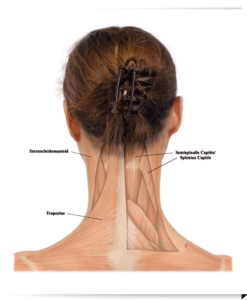 Cervical Dystonia is a condition that has lately been highlighted because of its increased incidence. Rather, the incidence is the same, but the diagnosis has become more accurate. Cervical dystonia is also called spastic or spasmodic torticollis, a condition in which there is ‘wry neck’, or twisting of the muscles of the neck on one side. This can be moderately to severely painful, and may become a transient or chronic condition. Women are affected more commonly than men, especially in their middle ages. The neck develops this random, automatic ‘swing’ to the front or back, and it can be very sudden too. The condition generally stabilizes after reaching a particular intensity, and can actually undergo spontaneous remission on its own, but this does not happen very often. Treatment is by need, supportive, as there is no cure for it, but good pain management and treatment approach can make a world of difference to the patient’s quality of life.
Cervical Dystonia is a condition that has lately been highlighted because of its increased incidence. Rather, the incidence is the same, but the diagnosis has become more accurate. Cervical dystonia is also called spastic or spasmodic torticollis, a condition in which there is ‘wry neck’, or twisting of the muscles of the neck on one side. This can be moderately to severely painful, and may become a transient or chronic condition. Women are affected more commonly than men, especially in their middle ages. The neck develops this random, automatic ‘swing’ to the front or back, and it can be very sudden too. The condition generally stabilizes after reaching a particular intensity, and can actually undergo spontaneous remission on its own, but this does not happen very often. Treatment is by need, supportive, as there is no cure for it, but good pain management and treatment approach can make a world of difference to the patient’s quality of life.
One such treatment approach is Botox. Botox is very well known because of its role in cosmetic medicine, but it has tremendous therapeutic applications as well. Botox is basically a derivative of the Botulinum toxin that is produced by a bacterium called Clostridium botulinum. This potent toxin is used in minuscule amounts and injected into the muscles that have contracted and caused to the neck to ‘wry’, or spasmodically contract on one side. When injected, the tiny dose of Botox acts at a block at a site called the neuromuscular junction, and blocks Acetylcholine, the messenger from the nerves that tells the muscles what to do. When this ‘message’ or stimulus is interrupted, the muscles no longer contract, and the tension in the neck is released. This has to be done in very small doses, and individually into each muscle that has contractured, therefore Botox is useful for conditions like cervical dystonia, where small muscle groups are involved. It cannot be used in large doses or for generalized dystonias where large muscle groups are affected.
While the relief is not immediate, it is effective and in about 4-6 days, a very significant reduction in the torticollis can be seen and felt. It can be measured by an electromyograph as well. Patients do not hold the awkward neck posture that they were previously forced to, and the respite can last up to 4 months, with proper application of Botox. The treatment can be repeated as necessary, but it is management for the cervical dystonia, not the cure. Occurrence of side effects is very rare, usually limited to a little pain or minor bruising at the site of pain, which quickly diminishes. Very few patients have significant adverse effects like drooping of the eyelids, or difficulty is swallowing, etc. If these are very pronounced, then they should be told to the doctor, to discuss alternate routes and treatment plans, but again, this is a rare occurrence.
The type of botulinum toxin to be used is usually decided upon by the doctor. Generally, people above the age of sixteen can be given Botox to treat cervical dystonia, as long as they have no history of allergic reaction to Botox or no serious side effects. It is avoided in women who are pregnant or breast feeding as it is not confirmed whether or not Botox can reach the baby, but everyone else is a potential candidate for Botox to treat cervical dystonia. Botox helps these patients in regaining their posture and restoring their quality of life with better muscle and pain management.
Sign up for Dr. Katz’s Botox Training Program to learn more.









